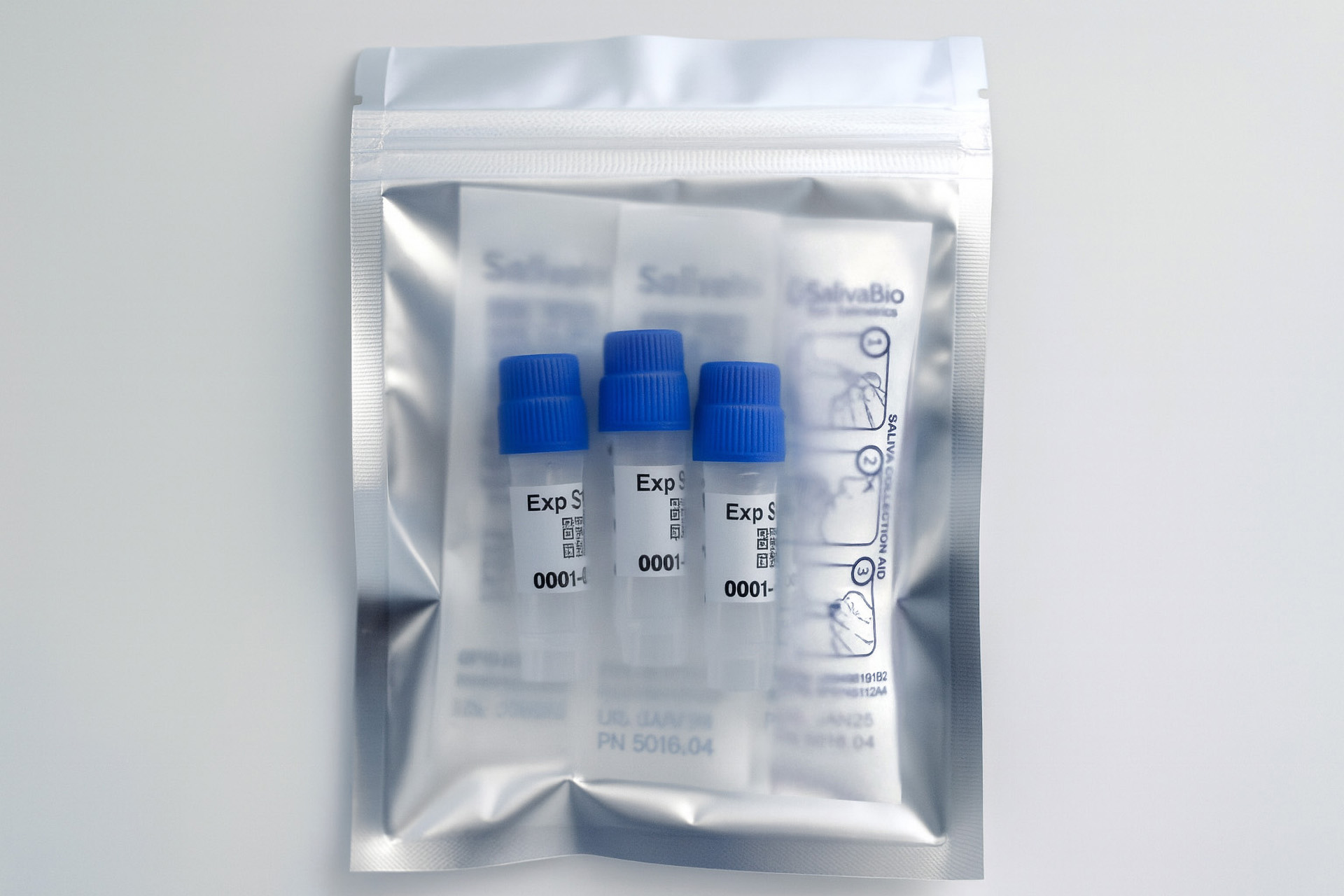Need Help?
Ask an expert
1. How to collect Salivary Aldosterone
APPROVED SALIVARY ALDOSTERONE COLLECTION METHODS
Salivary Aldosterone Collection Protocol
Collection volume, general considerations, and basic guidelines to maximize salivary aldosterone sample integrity. Use this analyte-specific collection protocol to plan you collection methodology and sampling schemes.

2. How to Assay for Salivary Aldosterone
Send Saliva Samples to Salimetrics
Add to StudyEasy and accurate results from the most trusted Salivary Bioscience Laboratory.
Order Code59101
3. Technical Summary
| Analyte Summary: | |
|---|---|
| Analyte: | Aldosterone |
| Aliases: | NA |
| Serum-Saliva Correlation: | 0.75-0.96 |
| *Optimum Collection Volume: | 175 μL |
| Interfering Factors |
|---|
| Posture affects aldosterone levels - we recommend sampling after 30 minutes in position. Licorice (real) mimics aldosterone and should be avoided 2 weeks before collection. |
| Assay Summary: | |
|---|---|
| Methodology: | ELISA |
| Sensitivity: | 35 pg/mL |
| Assay Range: | ---- |
| Assay Type: | Quantitative |
Background
Recent studies have shown that primary aldosteronism (PA) is the most common cause of secondary hypertension with a prevalence of approximately 5-10% among all hypertensive patients and an even higher prevalence among selected patients with advanced stages of hypertension and resistant hypertension. (1) Screening for PA among hypertensive patients is important due to its association with risk for cardiovascular disease and renal damage, (1) and non-invasive salivary aldosterone measurements have recently been explored as a means to facilitate this screening. Morning salivary aldosterone measurements alone were found to have some ability to discriminate between patients with PA and essential hypertension, and the presence or absence of a diurnal decline showed promise for distinguishing between the two forms of the disease (adenomas vs. bilateral hyperplasia). (2) Dysregulation of circulating aldosterone levels has also been associated with psychiatric disorders, and a recent study has similarly reported a significant negative association between morning salivary aldosterone levels and trait anxiety scores. Those with the high anxiety trait may be associated with an inability to respond with adequate cortisol levels during stress. (3) Produced largely in the adrenal glands, aldosterone is classified as a mineralocorticosteroid since its classical effect is to regulate the transport of sodium and water across cells of the kidney in exchange for potassium and hydrogen ions, thereby regulating blood volume and pressure. (4,5) Additionally, rapid non-genomic actions and local production of aldosterone have been identified in other tissues, including the heart, vascular system, adrenal gland, and kidney. These non-genomic mechanisms are being studied in connection with a range of diseases including cardiovascular disease, cirrhosis, kidney disease, insulin resistance, and diabetes. (6,7,8) No specific binding protein for aldosterone has been identified in blood. (4) Circulating aldosterone, not bound to serum proteins, enters saliva by passive diffusion. (9) Salivary aldosterone levels correspond approximately to 30% of those found in plasma, with good correlation found between plasma and non-extracted salivary aldosterone. (10) Salivary aldosterone levels are unaffected by salivary flow rate or hormone-binding proteins. (11) Both salivary and plasma aldosterone increase significantly while standing, compared to being seated; this effect is significantly higher in females than in males. A diurnal rhythm for salivary aldosterone exists for healthy individuals, with highest levels in the morning. (10)
References & Salivary Aldosterone Research
-
- Pilz, S., Tomaschitz, A., Stepan, V., Obermayer-Pietsch, B., Fahrleitner-Pammer, A., Schweighofer, N., Portugaller, H.R., et al. (2009). Graz Endocrine Causes of Hypertension (GECOH) study: A diagnostic accuracy study of aldosterone to active renin ratio in screening for primary aldosteronism. BMC Endocr Disord, 9:11.
- Manolopoulou, J., Gerum, S., Mulatero, P., Rossignol, P., Plouin, P.F., Reincke, M., & Bidlingmaier, M. (2010). Salivary aldosterone as a diagnostic aid in primary aldosteronism. Horm Metab Res, 42(6), 400-5.
- Jezova, D. & Hlavacova, N. (2008). Endocrine factors in stress and psychiatric disorders. Ann N Y Acad Sci, 1148, 495-503.
- Williams, G.H. (2005). Aldosterone biosynthesis, regulation, and classical mechanism of action. Heart Fail Rev, 10(1), 7-13.
- Meneton, P., Loffing, J., & Warnock, D.G. (2004). Sodium and potassium handling by the aldosterone-sensitive distal nephron: The pivotal role of the distal and connecting tubule. Am J Physiol Renal Physiol, 287(4), F593-601.
- Vogt, B. & Burnier, M. (2009). Aldosterone and cardiovascular risk. Curr Hypertens Rep, 11(6), 450-55.
- Schrier, R.W., Masoumi, A., & Elhassan, E. (2010). Aldosterone: Role in edematous disorders, hypertension, chronic renal failure, and metabolic syndrome. Clin J Am Soc Nephrol, 5(6), 1132-40.
- Whaley-Connell, A., Johnson, M.S., & Sowers, J.R. (2010). Aldosterone: Role in the cardiometabolic syndrome and resistant hypertension. Prog Cardiovasc Dis, 52(5), 401-9.
- Vining, R.F., McGinley, R.A., Symons, R.G. (1983). Hormones in saliva: Mode of entry and consequent implications for clinical interpretation. Clin Chem, 29(10), 1752-56.
- Manolopoulou, J., Mulatero, P., Maser-Gluth, C., Rossignol, P., Spyroglou, A., Vakrilova, Y., Petersenn, S., et al. (2009). Saliva as a medium for aldosterone measurement in repeated sampling studies. Steroids, 74(10-11), 853-58.
-
- Vining, R.F., McGinley, R.A. (1987). The measurement of hormones in saliva: Possibilities and pitfalls. J Steroid Biochem, 27(1-3), 81-94.
 Contact: Salimetrics (USA)
Contact: Salimetrics (USA)



